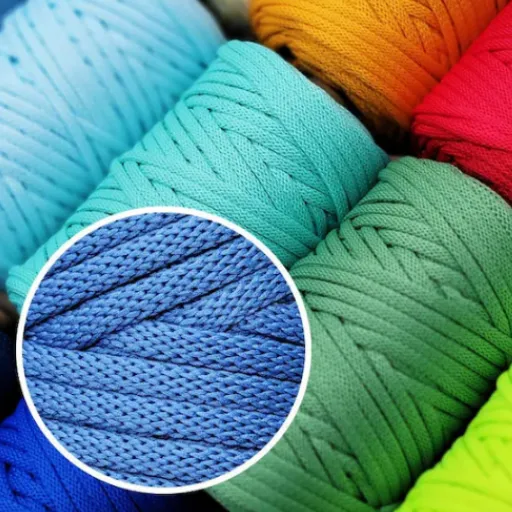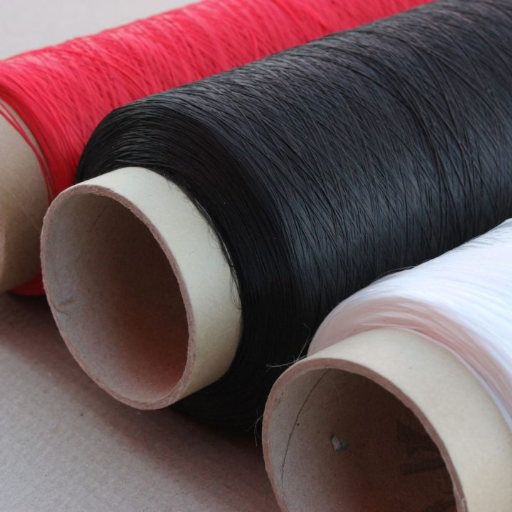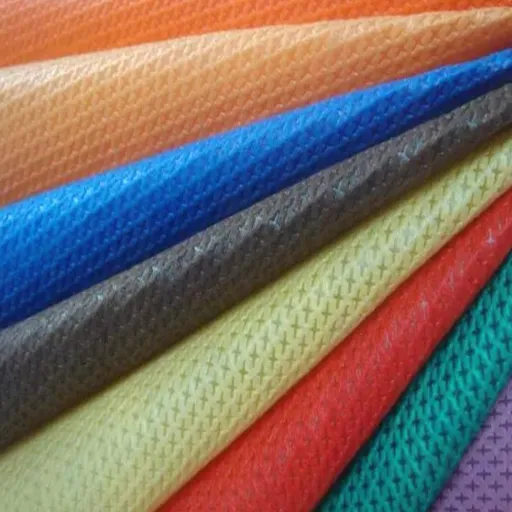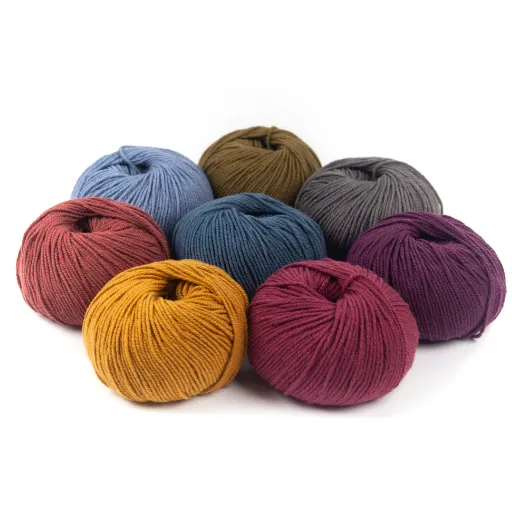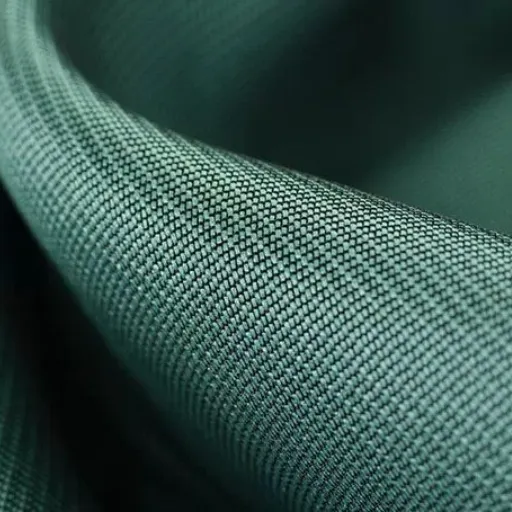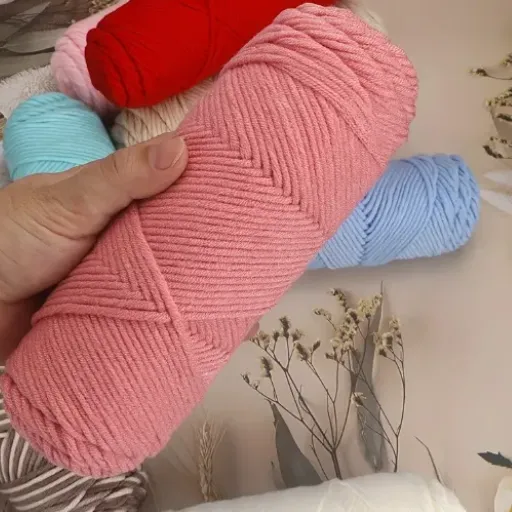Acrylic fibre and fabric hold a central place in the textile and fashion sectors due to their wide range of applications, resistance to wear and tear, and low cost. Acrylic not only has the largest share among fibres used for everyday comforts, but it also extends its applications to high-performance outdoor gear and others. However, what is it that acrylic fibre that brings the most? Where does it stand alongside other materials, and what are the industries that it mainly serves? The article takes the reader on a journey through the captivating world of acrylic fibers, revealing their property, use, and the science ineased in their making. The fashionista, the environmentalist, or the simply curious person will find this guide very informative about today’s most prevalent synthetic fibre. Don’t miss to learn about how acrylic merges function and creativity in every single thread!
Understanding Acrylic Fabric
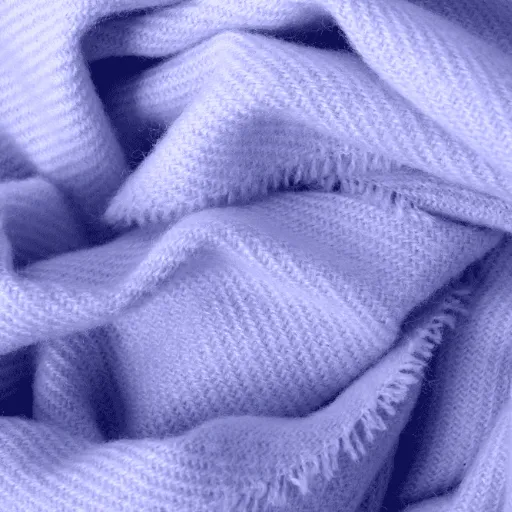
What is Acrylic Fabric?
Acrylic fabric is a man-made material that is formed from polymers produced through a chemical process. The main ingredient of this fabric is acrylonitrile, a compound that can be obtained from either petroleum or natural gas. This characteristic gives acrylic fabric a long life span, low weight, and high versatility, with features that closely resemble the look and feel of natural fibers such as wool.
Acrylic is strong and wear-resistant, thus it gets a big portion of versatile applications. Besides, it is soft, elastic, and retains the brightness of colors even after dyeing. Clothing, drapery, and outdoor gear are some of the many sectors where acrylic fabric finds its use because of its quick-dry nature, wrinkle-resistance, and keeping the shape capabilities over time.
Acrylic fabric is usually used in the making of clothing items such as sweaters, scarves, and socks for its warmness as well as its wool-like feel. In addition to fashion, acrylic is also found in home textiles like blankets and rugs, as well as in the industrial sector for making awnings. The combination of low price and versatility has ensured acrylic’s position among the top synthetic fibers in the contemporary textile market.
Characteristics of Acrylic Fiber
The foremost and most acclaimed characteristic of acrylic fiber is its lightweight property and soft texture which is why it is chosen as a substitute of wool. It is the most suitable choice for clothing and home textiles that are primarily meant for cold or damp areas because it provides warmth, insulation and at the same time has the ability to prevent moisture from penetrating. Its durability assures that acrylic products will not lose their shape and structural integrity through time and constant use.
One of the most prominent characteristics of acrylic fiber is its excellent durability. Being a very robust and reliable material for both indoor and outdoor uses, it does not get easily contaminated by insects or fungi and is quite resistant to environmental effects. Besides this, the great resistance acrylic has against sunlight also helps in increasing the items’ (such as awnings and outdoor upholstery) color and strength under extended UV rays exposure.
Besides all the good things, acrylic fiber is still a majorly easy-to-care-for and clean product and it dries fast, does not shrink very easily and remains soft even after several washes. The combination of these features, along with its low price, is one of the reasons why it is widely used in many areas like fashion, home décor, and industrial textiles, among others.
Types of Acrylic Fabric
Acrylic fabric is available in different types and one of them is the acrylic staple fiber which is used mainly depending on the strength of the fabric and the way the fabric has been made. Below are the main distinctions of acrylic fabric:
Acrylic Staple Fiber:
Staple fibers refer to the shorter fibers of acrylic that are spun together to make yarn. The resulting fiber closely resembles natural wool both in properties and usage, hence being a favorite for knitwear, sweaters, and blankets. Staple fiber acrylic is more commonly used because of its softness and blending character to other fibers, like cotton or wool. It has an excellent amount of elasticity thus causing no wrinkles, at the same time providing durability for everyday use.
Acrylic Filament Fiber:
Filament fibers on the contrary, are long and unbroken threads that provide a very smooth and glossy surface. The use of acrylic filament fiber is light, and it is often found in upholstery, curtains, and similar decorative textile applications because of the lavish look and finish it imparts. Moreover, these fibers have lower tendencies to form pills when compared to their shorter counterparts.
Modacrylic Fiber:
Modacrylic is an acrylic fiber that has undergone modification by incorporating other synthetics to its mix so that the material becomes flame-retardant and strong. It is commonly seen in flame-resistant products, e.g., wigs, firefighters’ clothing, and public space upholstery. The dyeing quality of modacrylic is also appealing, and it thus finds applications in artistic and practical design ventures.
Microfiber Acrylic:
Microfiber acrylic fibers are extremely fine and provide a silky touch, often used to create high-performance textiles. They are especially popular in sportswear, furnishings, and cleaning cloths. Their ultrafine structure enhances breathability while maintaining insulation, keeping the wearer comfortable in variable climates.
Weather-resistant Acrylic:
Developed for outdoor use, this type of acrylic is treated with UV stabilizers and other compounds to endure prolonged exposure to sunlight and harsh weather conditions. It is frequently used for awnings, outdoor furniture, umbrellas, and marine fabrics. Weather-resistant acrylic ensures long-lasting color retention and fabric integrity.
Production of Acrylic Fabric
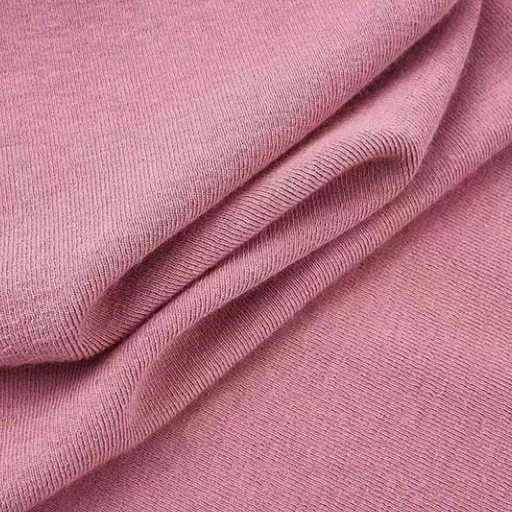
How Acrylic Fiber is Produced
Acrylic fabric production starts with the development of acrylic fiber, a synthetic polymer that is mainly made of acrylonitrile. The main raw material—acrylonitrile—is made from propylene, which is a waste product of oil refining. There are several important stages in this process:
- Polymerization: The polymerization of acrylonitrile is the first step in the making of acrylic fibers. In a chemical reaction, acrylonitrile monomers are joined with other monomers such as methyl acrylate or vinyl acetate. The reaction results in a polymer solution called polyacrylonitrile, which forms the basis of acrylic fiber.
- Extrusion: The polymer solution is spun into fine threads by a method known as wet or dry spinning. In wet spinning, the polymer solution is forced through small holes (called spinnerets) and into a liquid that hardens the solution into long strands. In dry spinning, the polymer solution is blown into a warm air chamber; the solvent evaporates, and solid fibers remain.
- Stretching and Drawing: The fibers are pulled and drawn to orient the molecules, which increases their strength and flexibility. This process also extends the life of the fibers that will be used for various applications.
- Heat Setting: The stretched fibers are heat-treated to make them stable. This process guarantees that the fibers will keep their shape and will remain robust under different hitherto varying atmospheric conditions and use.
- Cutting or Spinning: When the filaments are ready, they can either be cut into staple lengths or remain uncut as continuous filaments depending on the end user. Tree-like fibers can be spun into yarn, whereas filaments are used directly in products like outdoor fabrics.
By combining polymer science, technological innovations, eco-friendliness, and good manufacturing practices, acrylic fabric is still a great material with a lot of uses, thus accommodating the needs of the industrial, residential, and commercial markets.
Workplace Risks in Acrylic Fabric Production
The process of manufacturing acrylic fabric brings about various hazards that, if not properly handled through appropriate measures, could affect the safety and health of the workers. The main source of risk is the use of volatile organic compounds (VOCs), which are mainly released by the chemicals used in the process. The fumes emitted from these substances can be very dangerous for the workers’ lungs, especially if they are being inhaled in a poorly ventilated area and without the use of respiratory protective equipment for a long time.
The other big risk is that of fire and explosion. The production of acrylic usually makes use of combustible raw materials and intense heat, hence the need for enforcing very strong safety measures to avoid such incidents. There has to be a thorough knowledge of safe practices in dealing with these materials and firefighters’ drills must be done to lessen the chances of danger through workers’ ignorance.
In addition to that, the nature of the manufacturing premises is another source of danger, these include high levels of noise, the presence of heavy machines, and laborious work cycles which all contribute to the hazards of the workers. Hearing loss, back and joint problems, or accidents due to improper handling of machines are some of the consequences of a prolonged stay in such an environment. Hence, dealing with these issues means coming up with solid policies, giving constant training on safety matters, and issuing personal protective equipment so that the employees can be safe at all times in the workplace.
Uses of Acrylic Fabric
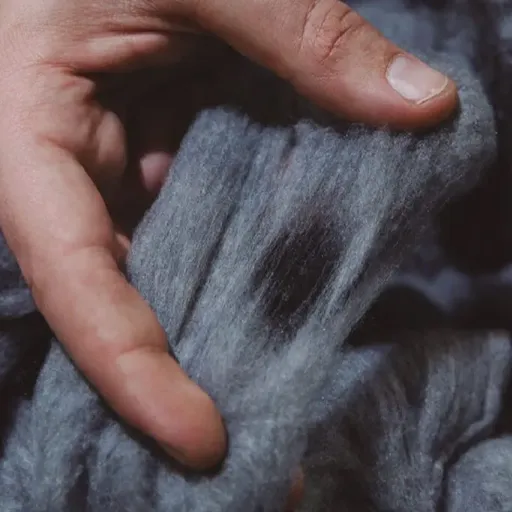
Common Applications of Acrylic Fabric
Acrylic fabric exhibits properties that make it an ideal material for various applications. It is no wonder that despite its high cost, it is still widely used due to its longevity, resistance to all weather conditions, and its ability to imitate the wool texture. Let’s take a look at some of the most common applications of acrylic fabric:
Apparel and Textiles
The clothing industry utilizes acrylic to a very large extent and uses it to make sweaters, socks, fleece, and scarves, among others. Its softness, warmth, and lightness are some of the reasons wool is usually replaced by acrylic. The fact that acrylic is also non-moth-eaten and washer-proof makes its lifetime suitable for daily wear.
Outdoor Fabrics
The application of acrylic to outdoor use is probably the most important among all its uses. Awnings, outdoor furniture covers, and umbrellas are some of the products that are typically manufactured with solution-dyed acrylic. This treatment guarantees that the fabric can endure high sunlight exposure and is fading resistant, which are both very important for the outdoor environment. Also, there is a data report that shows outdoor fabrics made of acrylic are growing at a rate of around 5% annually due to their increasing acceptance in both residential and commercial outdoor spaces.
Home Furnishings
Home furnishings are the main area where acrylic fibers are often blended, particularly in upholstery, rugs, and blankets. Its resistance to fading and cleaning/liveability aspect ensures that it is a suitable material for domestic use. Furthermore, acrylic is one of the main materials in house decoration as it is used to make curtains and cushions with vivid and long-lasting designs.
Industrial Applications
Acrylic fabric is being utilized in industries for such high toughness and resistance to chemicals as well as physical factors that it also used in industrial products such as filtration fabrics and insulation textiles. These materials are in great demand in filtration systems and construction due to their ability to cope with high temperatures and harsh conditions.
Sports and Performance Wear
Acrylic fabrics are being more and more adopted for sportswear because of their ability to wick moisture away from the body. Many manufacturers blend acrylic with other man-made fibers to make athletic clothing that is both comfortable and durable.
Crafts and Accessories
Acrylic yarns attract crafters’ attention as one of the best available materials for knitting and crocheting. They are reasonably priced, have a rich color range, remain in good condition after many washes, and thus, they are a trustworthy option for both individual and artistic projects.
Acrylic Fabric in Fashion and Design
Acrylic fabric has proved its worth in the fashion and design sectors as a material with many upsides like its versatility, low price, and practical nature. It is very common to see it in making clothes like the ones with sweaters, cozies, and coats, plus it is also used in fashion items such as gloves and hats. The main reason is that acrylic imitates the natural wool’s soft and warm nature while being lightweight and cheap at the same time. Designers tend to use acrylic for its capacity to take on bright and non-fading colors, thus, it is very suitable for daring and one-of-a-kind fashion statements or design elements.
Another big plus for acrylic fabric in the fashion world is its longevity and the fact that it is very easy to care for. It is a fabric that does not wrinkle, shrink, or fade easily, thus it keeps its shape and color even after many washes. The above-mentioned feature accounts for its being very suitable for everyday wear and other items that people use often. Likewise, the property of acrylic that allows it to quickly absorb moisture and dry out adds to its practicality for sportswear and outerwear, thus making people feel comfortable in different situations.
Acrylic has continued to play a very important role in interior design by contributing to products such as upholstery and home decor. Its durability and resistance to stains have made it a very good option for coverings, throws, and cushions that are both decorative and comfortable. The fabric gives this combination of style and practicality, since it is available in a wide range of patterns, textures, and colors that will exactly meet different ways of designing. Acrylic fabric still has and will always have that it is a popular and indispensable material in both personal fashion and wider design applications owing to its ability to combine aesthetic appeal with practical considerations.
Benefits of Acrylic Fiber in the Textile Industry
Acrylic fiber is a very important material in the textile industry because of its exceptional properties of durability, versatility, and cost efficiency. The main advantage of acrylic fiber is that it is very resistant to environmental factors mainly sunlight and moisture. That is why the fiber is an excellent choice for outdoor applications like awnings, upholstery, and activewear since it will remain good-looking and functional even after long periods.
Another major benefit is that acrylic fiber is very light and warm, thus it is considered a direct replacement for wool in colder regions. In addition to this, the fiber’s hypoallergenic qualities further support its usage, as it provides heat without irritating people who are sensitive to natural fibers. Furthermore, acrylic fiber is pigmentable to very bright and enduring colors, which makes it very attractive for both the fashion and the interior design markets.
Not to mention, acrylic fiber has been regarded as a very low-maintenance textile. It does not shrink and gets wrinkled very little, thus it is easy to clean and lasts longer. A combination of practicality with affordability ensures that acrylic fiber stays at the top of the list of synthetic fibers that manufacturers are using to get the right quality at the least cost. All these advantages cement its indispensable position in a wide range of textile products throughout different industries.
Comparing Acrylic to Other Fibers
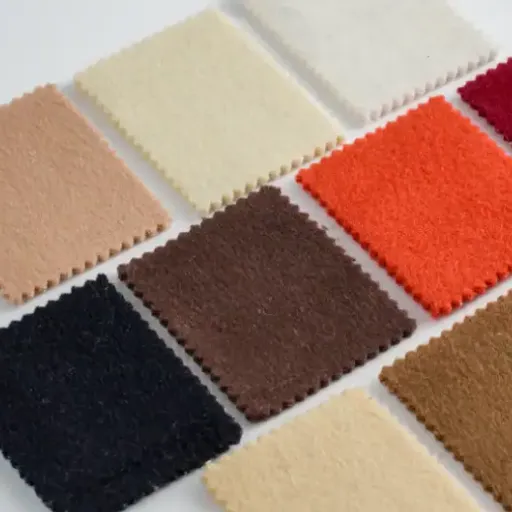
Acrylic vs. Natural Fibers
The main differences between acrylic fibers and natural fibers are their characteristics, origin, and care requirements. Acrylic fibers are man-made and chemically produced, which makes them cheap and accessible for both producers and consumers. In contrast, natural fibers are obtained from either plants or animals such as cotton, wool, or silk, which means that the production process is resource-consuming and less eco-friendly. These major differences bring about the impacts on the pricing, availability, and sustainability of the materials.
| Characteristic | Acrylic Fibers | Natural Fibers |
|---|---|---|
| Origin | Man-made, chemically produced | From plants or animals |
| Cost | Cheap and accessible | Resource-consuming production |
| Durability | Wrinkle, shrink, and fade resistant | Requires special care treatment |
| Maintenance | Minimal care required | Often needs handwashing or dry cleaning |
| Breathability | Less breathable | Excellent ventilation properties |
| Environmental Impact | Non-biodegradable | Biodegradable and renewable |
Durability and maintenance are the aspects where the acrylic fibers are the most beneficial. The acrylic fabric is very wrinkle, shrink, and fade resistant, thereby requiring very minimal care; thus, it is an everyday use product. Conversely, many of the natural fibers need quite often the proper care treatment, for instance, handwashing or dry cleaning, to keep their visuals and structure. Nevertheless, the medial fibers are still widely used due to their soft feel, good ventilation properties, and total comfort, especially in warmer climates or with sensitive skin.
Moreover, acrylic is a versatile material, that can be designed to imitate the feel and look of natural fibers like wool. On one hand, this guarantees that acrylic is less costly, but on the other hand, natural fibers are sometimes placed higher up the scale of environmental aspects, owing to their being biodegradable and renewable. The latter becomes a factor that might sway an eco-conscious consumer towards natural fibers; whereas an acrylic product is more likely to attract a buyer looking for a strong and economically priced alternative. In short, the decision between the two types—acrylic and natural fibers—basically depends on the consumer’s specific needs, preferences, and values.
Acrylic vs. Modacrylic: Key Differences
Acrylic and modacrylic fibers have common characteristics, but at the same time, they are also different in very important aspects such as composition, performance, and applications. The fibers made from acrylic are mostly polyacrylonitrile which accounts for the different attributes of durability, soft feel, and wrinkle resistance. Their combined quality has been a reason for the wide use of acrylic in several textile areas like making sweaters, blankets, and exterior furniture fabric. At the same time, modacrylic fibers, still based on polyacrylonitrile, have extra monomers that boost their flame resistance and flexibility. These improvements lead to making the fibers appropriate for protective clothing, wigs, and upholstery that have strict safety standards.
| Feature | Acrylic | Modacrylic |
|---|---|---|
| Composition | Mostly polyacrylonitrile | Polyacrylonitrile with extra monomers |
| Flame Resistance | Not naturally flame-resistant, may catch fire | Naturally flame-resistant, self-extinguishing |
| Common Uses | Sweaters, blankets, and outdoor furniture | Firefighter uniforms, wigs, safety upholstery |
| Performance | Wool-like, holds brilliant colors | Better performance in extreme conditions |
| Applications | Casual wear and decorative items | Specialized safety environments |
One of the most important differences is their interaction with heat and flames. Modacrylic fibers are naturally flame-resistant and thus, extinguish on their own when brought into contact with fire. This particularity renders them perfect for safety uses like firefighter uniforms and heat-sensitive materials. Acrylic fibers, in contrast, are not naturally flame-resistant and may catch fire when in contact with flames. This difference has a great bearing on the usage of the two fibers in places where fire safety is the main concern.
A further difference between acrylic and modacrylic lies in their applications and maintenance. Acrylic is preferred because of its similarity to wool and its capacity to hold brilliant colors, thus it is often used in casual wear and decorative items. Modacrylic, on the other hand, is used in highly specialized environments that require durability and safety because of its additional resistance properties. Though both are synthetic, modacrylic has a slightly better performance in extreme conditions thus making it suitable for niche markets. By being aware of these differences, both consumers and manufacturers can easily pick the right material depending on their needs.
Advantages and Disadvantages of Acrylic Fabric
Acrylic fabric has both pros and cons that need to be weighed. The lightweight and soft texture of acrylic fabric is one of its main advantages, making it very comfortable for clothing like sweaters and socks. Besides, it is a fabric that is very strong, is not easily wrinkled and keeps its shape so it can be maintained easily for a long time. Moreover, the acrylic fabric is fade-resistant because of sunlight exposure, thus making it excellent for outdoor uses such as patio furniture and awnings.
✓ Advantages
- ✓ Lightweight and soft texture
- ✓ Very strong and durable
- ✓ Wrinkle-resistant
- ✓ Retains shape over time
- ✓ Excellent fade resistance in sunlight
- ✓ Easy maintenance
- ✓ Cost-effective
✗ Disadvantages
- ✗ Not as breathable as natural fibers
- ✗ Uncomfortable in hot weather
- ✗ Flammable and melts at high temperatures
- ✗ Chemical-intensive production process
- ✗ Non-biodegradable waste
- ✗ Not environmentally friendly
On the other hand, there are considerable disadvantages to acrylic fabric that should not be overlooked. It is not as breathable as cotton and, hence, when worn in hot weather or during strenuous activities, it may become uncomfortable. Fire hazards are also associated with the fabric since it is flammable and will melt at very high temperatures, thus safety issues in some circumstances. On top of that, the whole production and eventually the disposal of acrylic fabrics are not eco-friendly at all since it involve chemical processes and leads to non-biodegradable waste.
💡 Key Takeaway: Acrylic fabric is an option one must carefully think about, looking at its advantages along with its limitations according to the specific needs. In the area of durability and color retention, for example, acrylic fabric scores high, but for applications that demand high breathability or sustainability, it may not be the right choice. Knowing these factors enables consumers and manufacturers to take thoughtful steps when they consider acrylic fabric for their projects or products.
Caring for Acrylic Fabric
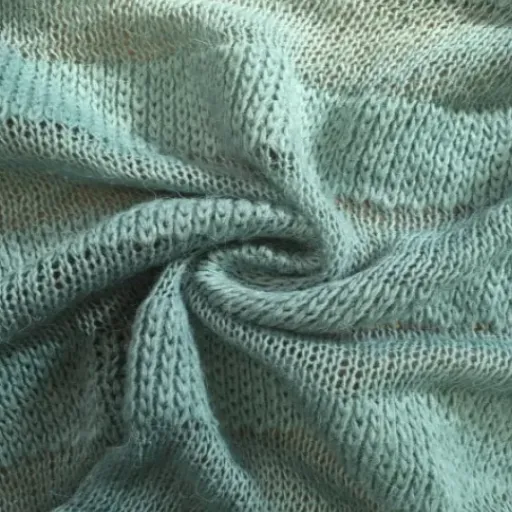
Washing and Maintenance Tips
Proper care of acrylic fabric can not only help to maintain its original look, but also prolong its life. The following washing and maintenance tips are given in detail:
1Washing Guidelines
Acrylic fabrics are usually machine-washable, but the care label should always be checked for specific instructions. To prevent any shrinking, use a gentle cycle with cold or warm water (not exceeding 30°C or 86°F). Washing lengths can be reduced by a mild detergent that’s gentle on the fibers. Don’t put too many clothes in the machine and this will allow for thorough cleansing.
2Drying
Once washing has been done, acrylic fabric can be either air-dried or tumble-dried on a low heat setting. High heat can deform or weaken the fibers, hence, it is vital to avoid such. If you wish to air-dry, then lay the fabric flat to keep its shape and avoid wrinkles.
3Stain Removal
In the case of hard stains that do not come off easy, pre-treat the area with a mild stain remover or a solution of water and detergent. Do gentle blotting of the stain instead of scrubbing it, and keep in mind that vigorous rubbing can ruin the fabric.
4Prevention and Removal of Pilling
Acrylic materials are affected by pilling. To prevent this, wash them inside out and use a softener along with it. However, if you see any pilling, then you can either use a fabric shaver or a special comb to remove the pills.
5Ironing and Sensitivity to Heat
Acrylic fibers cannot withstand heat, so for that reason, they should not be ironed at high temperatures. It is advisable to use a low-heat setting and preferably, putting a cloth between the iron and the fabric to prevent scorching would be a good decision.
6Storage Tips
Place acrylic garments in a cool and dry place out of the sunlight and it will take care of the fading problem. Fold the garment instead of hanging it as that would contribute to stretching over time.
7Sustainability and Prolonging Usage
Recent studies show that lower temperature machine-washing followed by air-drying can be environmentally friendly caring practices for acrylic fabrics. A report from the University of Leeds mentions that washing at 20°C (68°F) can bring down the energy usage by 66%.
🌱 Eco-Friendly Tip: When you implement these tips into your routine, the quality and appearance of your acrylic fabrics will be taken care of, while the environmental footprint and lifespan will also be minimized.
Common Issues and Solutions
Issue 1: Pilling on Acrylic Fabrics
Pilling is a common issue with acrylic fabrics, where small balls of fibers form on the surface, giving the material a worn-out look. It is usually caused by friction during wear or washing.
Solution: To prevent pilling from happening, turn garments inside out before washing and use a gentle cycle with cooler water. Moreover, do not overload the machine as it will increase the abrasion and make the pilling worse. If pilling does occur, use a fabric shaver to carefully remove the pills and restore the garment’s original appearance.
Issue 2: Fading Colors
Acrylic fabrics have the tendency to lose their vibrancy in the long run, especially when they are continuously exposed to direct sunlight or high heat. This may lead to demoting the item’s aesthetic appeal.
Solution: The best way to prevent fading is to avoid direct sunlight when drying acrylic fabrics. The preferred method would be air-drying in shaded areas. Always wash your items in cold water and with color-safe detergents to keep the color pigments intact.
Issue 3: Retaining Odors
The synthetic nature of acrylic fabrics may sometimes lead to trapping odors even after washing. This might be due to detergent residue or inadequate cleaning.
Solution: Use a washable and effective fabric deodorizer or soak the fabric in a mixture of water and white vinegar before washing. Ensure thorough rinsing during the wash cycle and allow the fabric to dry completely to prevent odors from lingering. Regular airing out can also help keep odors at bay.
Environmental Impact of Acrylic Fabric
The environmental impact of acrylic fabric is considerable primarily due to the materials and processes used for its manufacture. Its production depends on petrochemical production, which is a non-renewable resource, and thus leads to fossil fuel depletion. The production of acrylic fabrics is accompanied by high energy consumption and greenhouse gas emissions, thus contributing to global warming.
Another major problem is that acrylic fibers are highly persistent in the environment. Acrylic is a non-biodegradable material, which means that if thrown away, fabrics can stay in landfills for many years or even centuries. Furthermore, washing acrylic clothes releases tiny plastic particles, known as microplastics, which are the main source of pollution in water bodies. These microplastics are found in oceans and rivers where they are a threat to marine life and might even enter the human food chain.
⚠️ Environmental Concern: Manufacturers are working on processes to reduce the environmental damage caused by acrylic fabric through recycling and emission-cutting technology. Consumers can also play their part by opting for sustainable options or buying high-quality clothes that can last longer. Addressing the aforementioned issues on the part of the manufacturers, consumers, and regulators will significantly help in reducing the harm caused by acrylic textiles.
Frequently Asked Questions (FAQ)
Q: What is acrylic material clothing?
A: Acrylic material clothing signifies garments produced from acrylic fabric, a synthetic material obtained from the polymer polyacrylonitrile. Lightness, softness of touch, and lively hues are the primary characteristics of this clothing material.
Q: How is acrylic fabric made?
A: The creation of acrylic fabric starts from the polymerization of acrylonitrile, a chemical that can be derived from either petroleum or coal-based sources. The process results in the formation of continuous filament acrylic fibers, which are then woven or knitted into fabrics suitable for clothing.
Q: What are the benefits of wearing acrylic material clothing?
A: The list of benefits of acrylic material clothing includes excellent insulation, the ability to draw moisture away from the skin, and resistance to moths and mildew. The mimicry of wool through feel is an added advantage of acrylic as a clothing fabric while being lightweight and easy to care for.
Q: Are there any health risks associated with acrylic fabric?
A: The presence of residual monomers in acrylic fabric is suggested by some research studies to be the source of health risks, which might include the potential for cancer. However, the likelihood of developing cancer from wearing acrylic clothing is low, especially in cases where the fabric is made according to safety standards.
Q: How does acrylic compare to other synthetic fabrics like polyester and nylon?
A: By virtue of its softness and warmth, acrylic is often put in the same category as polyester and nylon. In contrast to polyester, which is more durable and less prone to wrinkling, acrylic can provide better insulation. When compared with nylon, the latter is stronger; however, it does not offer the same level of insulation. In the end, every synthetic fabric comes with distinct features suited to particular clothing requirements.
Q: What types of clothing are typically made from acrylic fabric?
A: The range of clothing produced from acrylic fabric includes sweaters, blankets, and even gym wear. The fabric’s adaptability to be used in both casual and formal attire makes it a favorite among clothing manufacturers.
Q: Is acrylic fabric flame-retardant?
A: Flame-retardant characteristics may be present in acrylic fabric depending on the kind of flame retardants used during its manufacturing. However, not all acrylic clothes have been subjected to flame resistance treatment, hence, it is necessary to check the specifications if the matter is a concern.
Q: How does the acrylic fiber market affect clothing prices?
A: The acrylic fiber market could be a factor in determining clothing prices due to the changing nature of the costs of raw materials and production capabilities. Being a major manufacturer of acrylic fiber, the changes in demand and supply can have a direct impact on the retail cost of acrylic material clothing across different markets.
Q: Can acrylic fabric be recycled?
A: Acrylic fabric recycling is possible, yet the process is less widespread compared to the recycling of other synthetic fabrics like polyester. Movement towards recycling initiatives for acrylic materials is on the rise, helping to cut down on waste and contributing to the sustainability of the fashion industry.
References
What Is Acrylic Fabric? – Natural Clothing – An overview of acrylic fabric, its composition, and how it’s made from manmade polymer fibers.
Acrylic Fabric Guide: Uses, Benefits & Care Tips – A detailed guide on the properties, benefits, and care tips for acrylic fabric.
Fabric Sources: Minerals — Acrylics, Polyester, & Nylon – Insights into the petroleum-based origins of synthetic fabrics like acrylic.
Acrylic Fiber – Wikipedia – A comprehensive overview of acrylic fiber, its uses in clothing, and other applications.
The Ultimate Guide to Acrylic Fabric: Qualities, Uses & More – A guide highlighting the durability, moisture-wicking, and UV-resistant properties of acrylic fabric.









